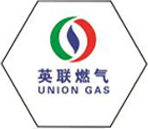
Dec . 04, 2024 05:51
Back to list
Understanding the Functionality and Benefits of Pressure Reducing Valves in Fluid Systems
Understanding Pressure Reducing Valves A Comprehensive Overview
Pressure reducing valves (PRVs) are essential components in various fluid systems, playing a crucial role in managing and controlling the pressure of liquids and gases. These devices are designed to reduce the incoming pressure from a higher level to a lower, more manageable level, ensuring the safety and efficiency of industrial, commercial, and residential applications. This article aims to delve into the significance, functionality, and applications of pressure reducing valves.
What is a Pressure Reducing Valve?
A pressure reducing valve is a type of control valve that automatically reduces the pressure of a fluid to a predetermined level. It acts as a pressure regulator designed to maintain a constant downstream pressure despite fluctuations in the upstream pressure. PRVs are equipped with a spring-and-diaphragm mechanism, which allows for automatic adjustments based on the pressure variations in the system.
How Does a Pressure Reducing Valve Work?
The operation of a PRV is relatively straightforward. The incoming fluid enters the valve body and passes through an orifice, where the pressure is measured by a sensing mechanism. When the downstream pressure exceeds the desired set point, the valve automatically closes to restrict the flow, thereby reducing the pressure. Conversely, when the downstream pressure drops below the set point, the valve opens to allow more fluid to flow through, restoring the required pressure level. This constant adjustment allows systems to operate efficiently and reduces the risk of damage due to overpressure conditions.
Key Features of Pressure Reducing Valves
1. Adjustment Mechanism Most PRVs come with an adjustable spring mechanism that enables users to set the desired downstream pressure according to specific requirements.
3. Materials of Construction PRVs are constructed from a variety of materials such as brass, stainless steel, and plastics, making them suitable for different environments and fluid types.
4. Compact Design Many modern PRVs offer a compact design that facilitates installation in tight spaces while ensuring efficient performance.
pressure reducing valve

Applications of Pressure Reducing Valves
Pressure reducing valves are widely used across multiple sectors, including
- Water Distribution Systems PRVs are integral in municipal water systems to control water pressure, ensuring safe and consistent water supply to households while preventing pipe damage from fluctuating pressure.
- HVAC Systems In heating, ventilation, and air conditioning systems, PRVs help regulate the pressure of steam and water, enhancing system efficiency and comfort levels.
- Industrial Processes Various industries, including oil and gas, pharmaceuticals, and food processing, utilize PRVs to maintain optimal pressure levels within their processes, ensuring safety and productivity.
- Irrigation Systems In agriculture, PRVs regulate water pressure in irrigation systems, allowing for efficient distribution of water and preventing damage to irrigation equipment.
Importance of Proper Maintenance
Maintaining pressure reducing valves is crucial for their longevity and efficiency. Routine inspection and maintenance can help identify issues such as leaks or wear and tear, which could lead to pressure fluctuations or valve failure. Additionally, regular testing of the set pressure ensures that the system operates within safe parameters.
Conclusion
In summary, pressure reducing valves are vital devices that play a significant role in various fluid systems. By regulating pressure, they enhance the safety and efficiency of operations across multiple industries. Understanding their functionality and maintaining them properly can help users harness their full potential, ensuring optimal performance in both residential and industrial applications. As technology advances, we can expect even more efficient and reliable PRVs to emerge, further enhancing our ability to manage and control fluid pressures in an ever-evolving landscape.
Latest news
-
Safety Valve Spring-Loaded Design Overpressure ProtectionNewsJul.25,2025
-
Precision Voltage Regulator AC5 Accuracy Grade PerformanceNewsJul.25,2025
-
Natural Gas Pressure Regulating Skid Industrial Pipeline ApplicationsNewsJul.25,2025
-
Natural Gas Filter Stainless Steel Mesh Element DesignNewsJul.25,2025
-
Gas Pressure Regulator Valve Direct-Acting Spring-Loaded DesignNewsJul.25,2025
-
Decompression Equipment Multi-Stage Heat Exchange System DesignNewsJul.25,2025

